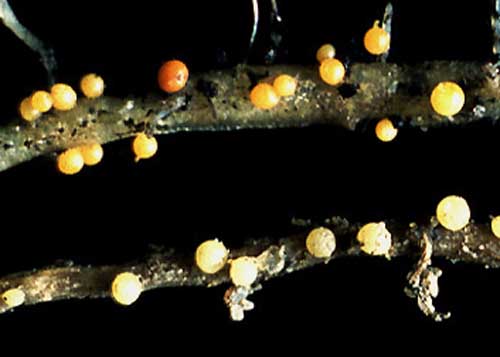Genomics And Sustainable Control Of The Potato Cyst Nematode Globodera Pallida
Published on 26 November 2009 in Sustainability and Communities
Introduction
The potato cyst nematode, Globodera pallida, is a serious problem for growers in Scotland and in all major potato growing regions of the world. It causes damage valued at over £50 million each year in the UK alone.
G. pallida is an introduced pathogen and regulations exist that aim to prevent its spread. The latest European Council Directive concerning PCN (2007/33/EC) came into effect in July 2009 and harmomised methods for monitoring and controlling PCN across the EU.
Such control measures for PCN impose costs on growers and include long rotations, nematicides, resistant cultivars, biocontrols and trap crops. However, very few cultivars with effective resistance against G. pallida are currently available and new EU legislation will remove many of the most effective nematicides due to concerns about their persistence in the soil.
New control strategies, including effective and specific nematicides and new, durable, resistance sources against G. pallida are therefore required.

Figure 1: Life stages of G. pallida
Key Points
- A range of expertise relevant to the study of G. pallida is available at SCRI. We have developed new quantitative diagnostic tools for G. pallida and have expertise in studying how G. pallida infects plants. Scientists in the Pathology and Genetics programmes have expertise in screening for resistance in plants, and we work together to identify new resistance sources and understand the mechanisms underlying resistance.
- SCRI is a partner in a UK consortium that is sequencing the genome of G. pallida.
- The G. pallida sequencing project will reveal the full complement of genes present in G. pallida including potential targets for new nematicides.
- The information from the genome sequence will underpin work that aims to identify essential nematode “effectors” responsible for parasite establishment in the host. Some of these may be recognised by resistance genes that can be incorporated into SCRI breeding programmes.
Research Undertaken
The G. pallida genome sequencing project underpins much of the research that we do. We are using bioinformatics tools in order to identify the full complement of nematode proteins that control their interactions with the host plant – the effectors.
We are characterising the functions of these effectors with a focus on identifying those that suppress plant defence responses. Effectors that are responsible for helping the nematode produce its feeding site in the host are also an important target.
We are using the genome sequence to understand how changes in the environment (such as temperature or exposure to different resistance sources) affect nematode physiology and development.

Figure 2: Cysts of G. pallida on the roots of a plant
Policy Implications
Food security has become a major issue as the world population increases and plant diseases cause yield losses that have an impact on this issue.
Agriculture is an important component of the Scottish economy and plays an important part in maintaining rural communities. Effective control of plant diseases plays an integral role in maintaining a successful agricultural sector.
Changes in the Scottish climate may exacerbate the effects of pests and diseases. Developing new control strategies against existing and introduced pathogens is therefore a priority.
Author
Dr John Jones, SCRI John.Jones@scri.ac.uk
Topics
Sustainability and Communities







